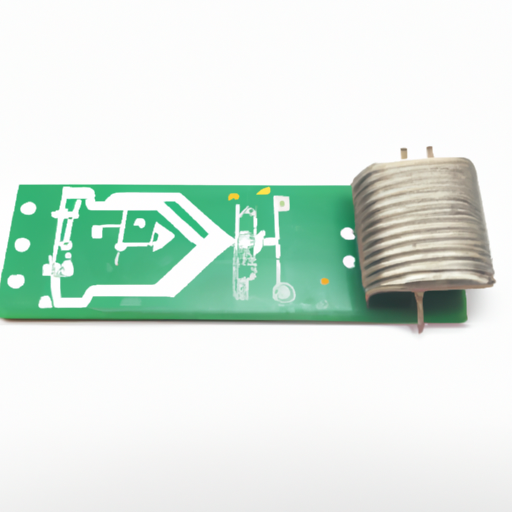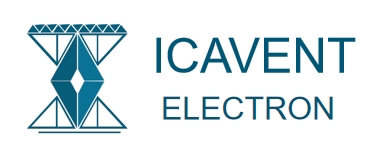What are the Advantages of Neutral Point Grounding Resistor Products?

I. Introduction
In the realm of electrical engineering, grounding is a critical aspect that ensures the safety and reliability of electrical systems. One of the key components in grounding systems is the Neutral Point Grounding Resistor (NGR). An NGR is a resistor connected between the neutral point of a transformer or generator and the ground. Its primary purpose is to limit fault currents and enhance the safety and reliability of electrical systems. This article aims to explore the advantages of NGR products, highlighting their importance in various applications and the benefits they bring to electrical systems.
II. Understanding Neutral Point Grounding
A. Explanation of Neutral Point Grounding
Neutral point grounding is a method used to connect the neutral point of a power system to the ground. The neutral point is the point in a three-phase system where the three phase voltages are equal in magnitude and 120 degrees apart in phase. Grounding the neutral point helps stabilize the voltage during normal operation and provides a path for fault currents during abnormal conditions.
There are several types of grounding systems, including solid grounding, ungrounded systems, and impedance grounding. Each system has its own advantages and applications, but neutral point grounding with resistors is particularly effective in limiting fault currents.
B. The Function of Grounding Resistors
Grounding resistors, specifically NGRs, serve a vital role in electrical systems. Their primary purpose is to limit the magnitude of fault currents that can occur during a ground fault. By doing so, NGRs help protect equipment from damage, reduce the risk of electrical shock, and enhance overall system safety.
NGRs work by providing a controlled path for fault currents to flow to the ground, thereby preventing excessive currents that could lead to catastrophic failures. This controlled grounding method allows for the safe operation of electrical systems while minimizing the potential for damage.
III. Advantages of Neutral Point Grounding Resistor Products
A. Enhanced System Safety
One of the most significant advantages of NGR products is their ability to enhance system safety. By limiting fault currents, NGRs reduce the risk of electrical shock to personnel working near electrical equipment. This is particularly important in industrial and commercial settings where employees may be exposed to high-voltage systems.
Additionally, NGRs protect equipment from damage during fault conditions. Without proper grounding, fault currents can cause overheating, arcing, and even explosions in electrical equipment. By providing a controlled path for these currents, NGRs help ensure the longevity and reliability of electrical systems.
B. Improved System Reliability
NGRs contribute to improved system reliability by minimizing downtime during faults. When a ground fault occurs, NGRs allow for quick detection and isolation of the fault, enabling maintenance personnel to address the issue promptly. This rapid response helps reduce the duration of outages and ensures that systems can return to normal operation as quickly as possible.
Furthermore, NGRs enhance overall system performance by maintaining voltage stability during normal operation. This stability is crucial for sensitive equipment that may be adversely affected by voltage fluctuations.
C. Cost-Effectiveness
Investing in NGR products can lead to significant cost savings over time. By reducing maintenance costs associated with equipment failures and extending the lifespan of electrical equipment, NGRs provide a cost-effective solution for businesses.
Moreover, companies that implement effective grounding solutions may benefit from lower insurance premiums due to the reduced risk of electrical incidents. This financial incentive further underscores the value of NGRs in electrical systems.
D. Compliance with Standards and Regulations
In many industries, compliance with safety standards and regulations is paramount. NGRs help organizations meet industry standards set by organizations such as the Institute of Electrical and Electronics Engineers (IEEE) and the International Electrotechnical Commission (IEC).
By ensuring that grounding systems are properly designed and implemented, NGRs contribute to safety and operational compliance. This adherence to standards not only protects personnel and equipment but also helps organizations avoid legal liabilities associated with electrical incidents.
E. Flexibility and Customization
NGR products offer flexibility and customization options to suit various applications. Different resistor values can be selected based on the specific requirements of an electrical system, allowing for tailored solutions that meet the unique needs of each installation.
Additionally, NGRs can be adapted to different system configurations, making them suitable for a wide range of applications, from industrial settings to renewable energy systems. This versatility ensures that NGRs can be integrated seamlessly into existing systems, enhancing their effectiveness.
F. Environmental Benefits
In an era where sustainability is a growing concern, NGRs contribute to environmental benefits by reducing electrical waste. By protecting equipment and extending its lifespan, NGRs help minimize the need for replacements and the associated waste generated by discarded electrical components.
Furthermore, NGRs support the integration of renewable energy systems, such as wind and solar power installations. These systems often require effective grounding solutions to ensure safe and reliable operation, making NGRs an essential component of sustainable electrical engineering practices.
IV. Applications of Neutral Point Grounding Resistor Products
A. Industrial Settings
NGR products are widely used in industrial settings, including manufacturing plants and mining operations. In these environments, the risk of electrical faults is heightened due to the presence of heavy machinery and high-voltage systems. NGRs help ensure the safety and reliability of these operations by limiting fault currents and protecting equipment.
B. Commercial Buildings
In commercial buildings, such as office complexes and retail environments, NGRs play a crucial role in maintaining electrical safety. These buildings often house sensitive electronic equipment that requires stable voltage levels. NGRs help protect this equipment from damage while ensuring the safety of occupants.
C. Renewable Energy Systems
The integration of renewable energy systems, such as wind farms and solar power installations, has become increasingly important in the transition to sustainable energy sources. NGRs are essential in these applications, providing effective grounding solutions that enhance safety and reliability.
D. Utility Companies
Utility companies rely on NGR products for power distribution networks and substation applications. These systems must maintain high levels of safety and reliability to ensure uninterrupted service to customers. NGRs help achieve these goals by limiting fault currents and facilitating quick fault detection.
V. Challenges and Considerations
A. Potential Drawbacks of NGRs
While NGRs offer numerous advantages, there are potential drawbacks to consider. Initial installation costs can be a concern for some organizations, particularly for those with limited budgets. Additionally, NGRs require regular maintenance to ensure optimal performance, which may add to operational costs.
B. Importance of Proper Sizing and Selection
To maximize the benefits of NGRs, it is crucial to select the appropriate resistor values for specific applications. Calculating the correct resistor size requires careful consideration of the electrical system's characteristics. Consulting with professionals in the field can help ensure optimal performance and safety.
VI. Conclusion
In summary, Neutral Point Grounding Resistor products offer a multitude of advantages that enhance the safety, reliability, and cost-effectiveness of electrical systems. By limiting fault currents, protecting equipment, and ensuring compliance with industry standards, NGRs play a vital role in various applications, from industrial settings to renewable energy systems.
Investing in quality grounding solutions, such as NGRs, is essential for organizations seeking to improve their electrical systems' performance and safety. As the demand for reliable and sustainable electrical solutions continues to grow, further research and consultation with experts in the field will be crucial for optimizing grounding practices.
VII. References
1. IEEE Standards Association. (n.d.). IEEE Std 142-2007, IEEE Green Book: Grounding of Industrial and Commercial Power Systems.
2. International Electrotechnical Commission. (n.d.). IEC 60364-4-41: Low-voltage electrical installations – Part 4-41: Protection for safety – Protection against electric shock.
3. National Fire Protection Association. (n.d.). NFPA 70: National Electrical Code.
4. Various articles and studies on grounding systems and NGR applications.
This comprehensive exploration of the advantages of Neutral Point Grounding Resistor products underscores their importance in modern electrical engineering, highlighting the need for effective grounding solutions in a variety of applications.
What are the Advantages of Neutral Point Grounding Resistor Products?

I. Introduction
In the realm of electrical engineering, grounding is a critical aspect that ensures the safety and reliability of electrical systems. One of the key components in grounding systems is the Neutral Point Grounding Resistor (NGR). An NGR is a resistor connected between the neutral point of a transformer or generator and the ground. Its primary purpose is to limit fault currents and enhance the safety and reliability of electrical systems. This article aims to explore the advantages of NGR products, highlighting their importance in various applications and the benefits they bring to electrical systems.
II. Understanding Neutral Point Grounding
A. Explanation of Neutral Point Grounding
Neutral point grounding is a method used to connect the neutral point of a power system to the ground. The neutral point is the point in a three-phase system where the three phase voltages are equal in magnitude and 120 degrees apart in phase. Grounding the neutral point helps stabilize the voltage during normal operation and provides a path for fault currents during abnormal conditions.
There are several types of grounding systems, including solid grounding, ungrounded systems, and impedance grounding. Each system has its own advantages and applications, but neutral point grounding with resistors is particularly effective in limiting fault currents.
B. The Function of Grounding Resistors
Grounding resistors, specifically NGRs, serve a vital role in electrical systems. Their primary purpose is to limit the magnitude of fault currents that can occur during a ground fault. By doing so, NGRs help protect equipment from damage, reduce the risk of electrical shock, and enhance overall system safety.
NGRs work by providing a controlled path for fault currents to flow to the ground, thereby preventing excessive currents that could lead to catastrophic failures. This controlled grounding method allows for the safe operation of electrical systems while minimizing the potential for damage.
III. Advantages of Neutral Point Grounding Resistor Products
A. Enhanced System Safety
One of the most significant advantages of NGR products is their ability to enhance system safety. By limiting fault currents, NGRs reduce the risk of electrical shock to personnel working near electrical equipment. This is particularly important in industrial and commercial settings where employees may be exposed to high-voltage systems.
Additionally, NGRs protect equipment from damage during fault conditions. Without proper grounding, fault currents can cause overheating, arcing, and even explosions in electrical equipment. By providing a controlled path for these currents, NGRs help ensure the longevity and reliability of electrical systems.
B. Improved System Reliability
NGRs contribute to improved system reliability by minimizing downtime during faults. When a ground fault occurs, NGRs allow for quick detection and isolation of the fault, enabling maintenance personnel to address the issue promptly. This rapid response helps reduce the duration of outages and ensures that systems can return to normal operation as quickly as possible.
Furthermore, NGRs enhance overall system performance by maintaining voltage stability during normal operation. This stability is crucial for sensitive equipment that may be adversely affected by voltage fluctuations.
C. Cost-Effectiveness
Investing in NGR products can lead to significant cost savings over time. By reducing maintenance costs associated with equipment failures and extending the lifespan of electrical equipment, NGRs provide a cost-effective solution for businesses.
Moreover, companies that implement effective grounding solutions may benefit from lower insurance premiums due to the reduced risk of electrical incidents. This financial incentive further underscores the value of NGRs in electrical systems.
D. Compliance with Standards and Regulations
In many industries, compliance with safety standards and regulations is paramount. NGRs help organizations meet industry standards set by organizations such as the Institute of Electrical and Electronics Engineers (IEEE) and the International Electrotechnical Commission (IEC).
By ensuring that grounding systems are properly designed and implemented, NGRs contribute to safety and operational compliance. This adherence to standards not only protects personnel and equipment but also helps organizations avoid legal liabilities associated with electrical incidents.
E. Flexibility and Customization
NGR products offer flexibility and customization options to suit various applications. Different resistor values can be selected based on the specific requirements of an electrical system, allowing for tailored solutions that meet the unique needs of each installation.
Additionally, NGRs can be adapted to different system configurations, making them suitable for a wide range of applications, from industrial settings to renewable energy systems. This versatility ensures that NGRs can be integrated seamlessly into existing systems, enhancing their effectiveness.
F. Environmental Benefits
In an era where sustainability is a growing concern, NGRs contribute to environmental benefits by reducing electrical waste. By protecting equipment and extending its lifespan, NGRs help minimize the need for replacements and the associated waste generated by discarded electrical components.
Furthermore, NGRs support the integration of renewable energy systems, such as wind and solar power installations. These systems often require effective grounding solutions to ensure safe and reliable operation, making NGRs an essential component of sustainable electrical engineering practices.
IV. Applications of Neutral Point Grounding Resistor Products
A. Industrial Settings
NGR products are widely used in industrial settings, including manufacturing plants and mining operations. In these environments, the risk of electrical faults is heightened due to the presence of heavy machinery and high-voltage systems. NGRs help ensure the safety and reliability of these operations by limiting fault currents and protecting equipment.
B. Commercial Buildings
In commercial buildings, such as office complexes and retail environments, NGRs play a crucial role in maintaining electrical safety. These buildings often house sensitive electronic equipment that requires stable voltage levels. NGRs help protect this equipment from damage while ensuring the safety of occupants.
C. Renewable Energy Systems
The integration of renewable energy systems, such as wind farms and solar power installations, has become increasingly important in the transition to sustainable energy sources. NGRs are essential in these applications, providing effective grounding solutions that enhance safety and reliability.
D. Utility Companies
Utility companies rely on NGR products for power distribution networks and substation applications. These systems must maintain high levels of safety and reliability to ensure uninterrupted service to customers. NGRs help achieve these goals by limiting fault currents and facilitating quick fault detection.
V. Challenges and Considerations
A. Potential Drawbacks of NGRs
While NGRs offer numerous advantages, there are potential drawbacks to consider. Initial installation costs can be a concern for some organizations, particularly for those with limited budgets. Additionally, NGRs require regular maintenance to ensure optimal performance, which may add to operational costs.
B. Importance of Proper Sizing and Selection
To maximize the benefits of NGRs, it is crucial to select the appropriate resistor values for specific applications. Calculating the correct resistor size requires careful consideration of the electrical system's characteristics. Consulting with professionals in the field can help ensure optimal performance and safety.
VI. Conclusion
In summary, Neutral Point Grounding Resistor products offer a multitude of advantages that enhance the safety, reliability, and cost-effectiveness of electrical systems. By limiting fault currents, protecting equipment, and ensuring compliance with industry standards, NGRs play a vital role in various applications, from industrial settings to renewable energy systems.
Investing in quality grounding solutions, such as NGRs, is essential for organizations seeking to improve their electrical systems' performance and safety. As the demand for reliable and sustainable electrical solutions continues to grow, further research and consultation with experts in the field will be crucial for optimizing grounding practices.
VII. References
1. IEEE Standards Association. (n.d.). IEEE Std 142-2007, IEEE Green Book: Grounding of Industrial and Commercial Power Systems.
2. International Electrotechnical Commission. (n.d.). IEC 60364-4-41: Low-voltage electrical installations – Part 4-41: Protection for safety – Protection against electric shock.
3. National Fire Protection Association. (n.d.). NFPA 70: National Electrical Code.
4. Various articles and studies on grounding systems and NGR applications.
This comprehensive exploration of the advantages of Neutral Point Grounding Resistor products underscores their importance in modern electrical engineering, highlighting the need for effective grounding solutions in a variety of applications.













